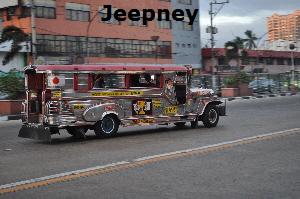|
Philippines climbing and information about visiting |
|||||||
|
Climbing Regions Climbing in the Philippines can be a big adventure for some or just a walk in the park of others. Some of the areas are easy to get to and others are not. There are four Regions of climbing: Luzon, Visayas, Mindanao and Palawan. Climbing, for the most part, is a new sport here. As a result, there has not been much development of access and routes. There is great potential for new routes and areas are very open. Luzon is the region that has most of the known established areas. One of the reasons for this is Luzon is the main island and the location of Manila, the capital city. Luzon is the northern - most island and also has the largest population. The most established areas in Luzon are Montalban and Atimonan. Visayas region is to the south of Luzon and is made up of five main islands: Panay, Cebu, Negros, Leyte and Samar. Cebu is the center of the Visayas Region and also where the main established area is. Mindanao is the most southern region and has four areas. Mindanao is also home to the highest mountain in the Philippines, Mount Apo – which means “grandchild.” It is 2,954 meters (9,692 feet) high and overlooks the city of Davao to the northeast. Palawan is located to the west of Visayas Region. This area has few established areas but has great potential. Palawan is also the best region for deep water soloing (DSW)
Philippines, The About! http://en.wikipedia.org/wiki/Philippines General: The Philippines is an archipelago of 7,107 islands and is located in the Ring of Fire. A population of about 92 million people makes it the 12th most populous country in the world. Tagalog and English are both official languages of the country. Just about all Filipinos speak and understand English so traveling is fairly easy. As a side note, there are eight regional languages that are designated by the government. The primary religion is Christian with most being Roman Catholic. Weather: You are in the tropics, it’s hot and humid. The temps are the average minimum and maximum and can be higher or lower. The average low humidity in April is around 64% with an average high of 82% in August & September. There are three seasons:
Traveling: Traveling around the Philippines can be an adventure in itself. Public transportation is readily available, but Lodging: One of the great parts about the Philippines is affordability for the traveling climber. The prices generally reflect quality; ranging from 500 peso to 8,000+ pesos a night. You get what you pay for, but sometimes you can find a gem of a place for a great price.
Safety: You will hear a lot about the Philippines being a dangerous place to visit. There are no more dangers here than anywhere else. You need to be careful any where you travel outside of your home country, but then again for some their home country is just as dangerous or more. To learn about the problem areas contact your country’s State Department. Health Care: The doctors are good, but the problem with getting to them in a timely manner in an emergency is another thing; plus the location of the climbing areas makes it even harder.
|
|||||||

|

 can be somewhat overwhelming to use. After you understand the system it is very easy to get around but will take some time to get to your destination because the traffic is very bad here. The use of taxies will get you any were you need to go but make sure the driver is using the meter and not giving you a fixed rate. Always ask the driver before you get in the taxi to see if he will take you where you want to go, some drivers will not take you to some places, not because it is a bad area, but he will lose money taking you there and having to drive back to his area of operation. The other thing you can do is to hire a drive for around 5,000 Peso; with that cost you have him for the day.
can be somewhat overwhelming to use. After you understand the system it is very easy to get around but will take some time to get to your destination because the traffic is very bad here. The use of taxies will get you any were you need to go but make sure the driver is using the meter and not giving you a fixed rate. Always ask the driver before you get in the taxi to see if he will take you where you want to go, some drivers will not take you to some places, not because it is a bad area, but he will lose money taking you there and having to drive back to his area of operation. The other thing you can do is to hire a drive for around 5,000 Peso; with that cost you have him for the day.